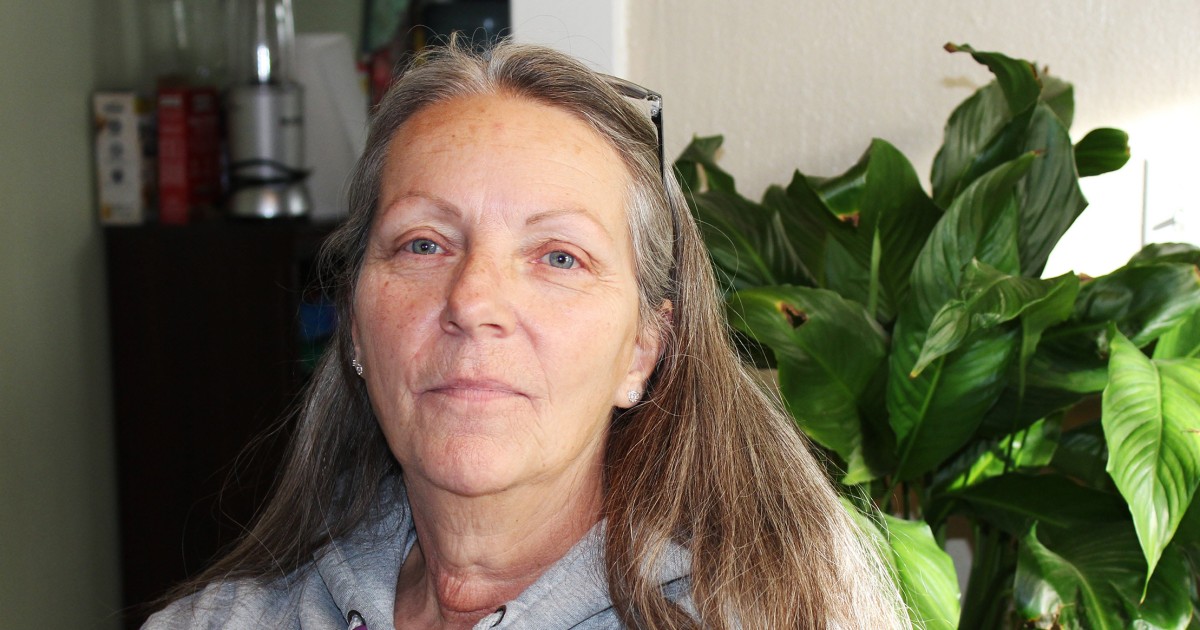
MISSOULA, Mont. — An hour before sunrise, Shelly Brost walked a mile in freezing rain to the public assistance office. She was running out of time to prove she still qualified for food aid after being stymied by a backlogged state call center.
Twice, she’d tried to use Montana’s public assistance help line to complete an interview required to recertify her Supplemental Nutrition Assistance Program, or SNAP, benefits. Each time, the call dropped after more than an hour on hold.
“I was ready to cry,” Brost said as she stood in line with about a dozen other people waiting for the office to open on a recent November morning. “I’ve got a hungry 13-year-old kid.”
Low-income families that need safety-net services, such as food and cash assistance, have become collateral damage in the bureaucratic scramble to determine whether tens of millions of people still qualify for Medicaid after a pandemic-era freeze on disenrollment ended this spring. These are people whose applications and renewal forms have been delayed or lost, or who, like Brost, can’t reach overwhelmed government call center workers.
The impact on services for low-income families is an overlooked consequence of the Medicaid “unwinding,” which has led to coverage being terminated for millions of people since April, with millions more expected to lose coverage in the coming months.
“The Medicaid unwinding has created huge problems for administrative staff,” said Leighton Ku, director of the Center for Health Policy Research at George Washington University’s Milken Institute School of Public Health.
Most states rely on the same workers and computer systems to sort eligibility for Medicaid and SNAP, according to the Center on Budget and Policy Priorities, a left-leaning think tank in Washington, D.C. The difficulty of signing up for other public assistance benefits varies, depending on how each state sets up its programs and how well agencies are staffed to handle extra work caused by Medicaid redeterminations.
People seeking public aid have historically encountered long call center wait times and limited options for in-person help. Those long-standing problems have worsened as record numbers of Medicaid recipients seek help with enrollment.
Attorneys and organizations assisting applicants for food benefits in Montana, Missouri, and Virginia, for example, said applications have vanished without a response and phone calls to workers determining eligibility frequently go unanswered.
“Our clients are already living on a razor’s edge, and this can just knock them off,” said Megan Dishong, deputy director of the Montana Legal Services Association.
SNAP enrollment is about half that of Medicaid. In April, nearly 42 million Americans received food assistance, compared with 87.4 million enrolled in the health coverage program.
SNAP itself has undergone major changes this year — a policy that increased benefits during the pandemic expired, and work requirements have been reinstated. According to the most recent federal data, SNAP enrollment dropped by 1 million from January to August, much less than the decline in Medicaid enrollment that started in April.
Still, official data sources don’t capture delays and other difficulties people face in getting benefits.
In Virginia, where local offices of the state Department of Social Services handle Medicaid and SNAP applications, “I’ve had several clients who have submitted applications and they’ve just gone into the ether,” said Majesta-Doré Legnini, an Equal Justice Works fellow at the Legal Aid Justice Center who works on SNAP issues.
A client applying for assistance for the first time didn’t hear anything for three months and had to refile. Another got benefits after 2½ months, after having endured application processing delays, a denial letter, and an appeal. A family with mixed immigration status — the children qualified for benefits — didn’t have benefits for eight months after being erroneously cut off and then experienced delays after reapplying.
Virginia is supposed to process each application within 30 days. “Most of my clients have kids that are under 15,” Legnini said, and many tell her “they’re having trouble getting enough food to feed their kids.” The Virginia Department of Social Services did not answer questions from KFF Health News.
In Missouri, a federal lawsuit filed before the unwinding began alleges that a dysfunctional system prevents low-income residents from getting food aid. More than half of Missouri applicants were denied aid in July because they couldn’t complete an interview — not because they were ineligible, according to a document filed in the case.
The application of Mary Holmes, a 57-year-old St. Louis woman with throat cancer and other chronic conditions, was denied in February 2022 because she couldn’t reach a call center to complete her interview. Holmes repeatedly phoned the call center but waited for hours on hold, often with hundreds of people ahead of her. Her benefits were reinstated after the judge admonished the state for the long waits during a March 2022 hearing. The lawsuit remains open.
Now, with Missouri reassessing the Medicaid enrollment of more than 1 million recipients, advocates said those systemic flaws have escalated into a crisis for the most vulnerable.
“It’s a major firestorm with both these things going on at once,” said Joel Ferber, director of advocacy for Legal Services of Eastern Missouri, which represents Holmes and the other plaintiffs.
State officials said they had “made significant strides to make interviews more widely available,” according to a recent case filing, such as by hiring “outside vendors to handle Medicaid calls to free up more state employees to handle SNAP interviews.”
Montana officials said the Medicaid redetermination process similarly collided with an already troubled system in that state.
In September, Charlie Brereton, director of the Montana Department of Public Health and Human Services, told lawmakers the state was working to improve its public assistance help line, “which, frankly, has been plagued with some challenges and issues for many, many years.”
Brereton said the agency increased the wages of client coordinators to fill in-person jobs. The state contracted about 50 workers from national agencies to supplement the call center’s staff and created a separate queue on its help line for people applying for food or temporary cash assistance.
Jon Ebelt, a Montana health department spokesperson, didn’t directly answer how long SNAP and cash assistance callers are waiting on hold on average, but said applications “are being processed in a timely fashion.”
People trying to use the state’s system said the long waits persisted in November.
Since April, nearly 5,000 fewer Montanans are receiving SNAP benefits. But that doesn’t necessarily mean fewer people qualify, said Lorianne Burhop, chief policy officer for the Montana Food Bank Network. Clients without internet access, unlimited cellphone minutes, or the ability to travel to a public assistance office may not be able to jump through the hoops to keep their benefits.
“We’ve seen consistently high numbers at food banks, whereas SNAP, we’ve seen trickling down,” Burhop said. “I think you have to consider access as a factor that’s driving that decline.”
In Missoula, DeAnna Marchand waited on hold on Montana’s help line as a November deadline approached. She fell into a category of people facing multiple cutoffs: one to recertify food assistance for her and her grandson, another to prove she still qualifies for the Medicaid program that pays for her in-home caregiver, and a third to keep her grandson’s Medicaid.
“I don’t know what they want,” Marchand said. “How am I supposed to get that if I can’t talk with somebody?”
After half an hour, she followed prompts to schedule a callback. But an automated voice announced slots were full and instructed her to wait on hold again. An hour later, the call dropped.






